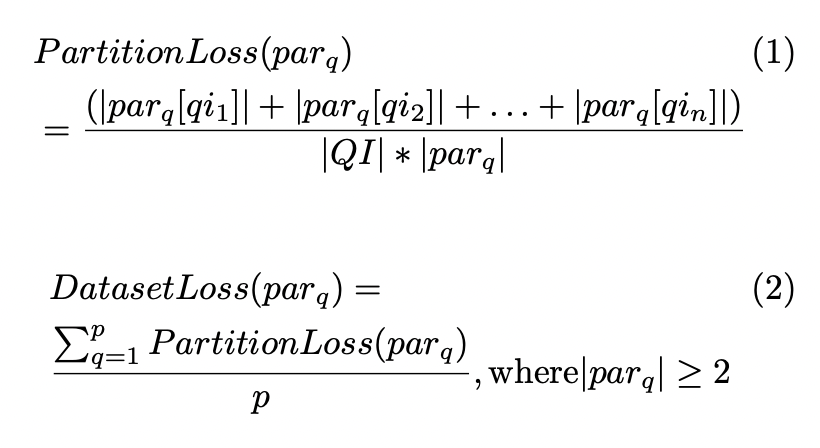Privacy Threats and Privacy Preservation Techniques for Farmer Data Collections Based on Data Shuffling
Main Article Content
Abstract
Aside from smart technologies, farm data collection is also important for smart farms including farm environment data collection and farmer survey data collection. With farm data collection, we observe that it is generally proposed to utilize in smart farm systems. However, it can also be released for use in the outside scope of the data collecting organization for an appropriate business reason such as improving the smart farm system, product quality, and customer service. Moreover, we can observe that the farmer survey data collection often includes sensitive data, the private data of farmers. Thus, it could lead to privacy violation issues when it is released. To address these issues in the farmer survey data collection, an anatomization model can protect the users' private data that is available in farmer survey data collection to be proposed. However, it still has disorganized issues and privacy violation issues in the sensitive table that must be addressed. To rid these vulnerabilities of anatomization models, a new privacy preservation model based on data shuffing is proposed in this work. Moreover, the proposed model is evaluated by conducting extensive experiments. The experimental results indicate that the proposed model is more efficient than the anatomization model for the farmer survey data collection. That is, the adversary can have the confidence for re-identifying every sensitive data that is available in farmer survey data collection that is after satisfied by the privacy preservation constraint of the proposed model to be at most 1/l. Furthermore, after the farmer survey data collection satisfies the privacy preservation constraint of the proposed model, it does not have disorganized issues and privacy violation issues from considering the sensitive values.
Article Details

This work is licensed under a Creative Commons Attribution-NonCommercial-NoDerivatives 4.0 International License.
References
S. Riyana, N. Riyana and W. Sujinda, “An Anatomization Model for Farmer Data Collections,” SN COMPUT. SCI, no.353, 2021.
S. Thongprakaisang, A. Thiantanawat, N. Rangkadilok, T. Suriyo and J. Satayavivad, “Glyphosate induces human breast cancer cells growth via estrogen receptors,” Food and Chemical Toxicology, vol. 59, pp.129-136, 2013.
C. Ventura, MRR. Nieto, N. Bourguignon, V. Lux-Lantos, H. Rodriguez, G. Cao, A. Randi, C. Cocca and M. Nu ́n ̃ez, “Pesticide chlorpyrifos acts as an endocrine disruptor in adult rats causing changes in mammary gland and hormonal balance,” The Journal of Steroid Biochemistry and Molecular Biology, vol. 156, pp. 1-9, 2016.
S.H. Jee, H.W. Kuo, W. Su, C. Chang, C. Sun and J.D. Wang, “Photodamage and skin cancer among paraquat workers,” International Journal of Dermatology, vol.34, no. 7, pp.466-469, 1995.
J.D. Wang, W.E. Li, F.C. Hu and K.H. Hu, “Occupational risk and development of premalignant skin lesions among paraquat manufacturers,” British Journal of Industrial Medicine, vol. 44, no. 3, pp.196-200, 1987.
L. Sweeney, “k-anonymity: a model for protecting privacy,” International Journal of Uncertainty, Fuzziness and Knowledge-Based Systems, vol.10, no. 5, pp.557-570, 2002.
A. Machanavajjhala, J. Gehrke, D. Kifer and M. Venkitasubramaniam, “L-diversity: privacy beyond k-anonymity,” 22nd International Conference on Data Engineering (ICDE’06), pp.24-24, 2006.
X. Xiao and Y. Tao, “Anatomy: simple and effective privacy preservation,” in Proceedings of the 32nd international conference on Very large data bases (VLDB’06), 2006.
Q. Zhang, N. Koudas, D. Srivastava and T. Yu, “Aggregate Query Answering on Anonymized Tables,” 2007 IEEE 23rd International Conference on Data Engineering, pp. 116-125, 2007.
R. Kohavi, “Scaling Up the Accuracy of Naive- Bayes Classifiers: A Decision-Tree Hybrid,” Proceedings of the Second International Conference on Knowledge Discovery and Data Mining, pp. 202-207, 1996.
T. Kanwal, S. A. A. Shaukat, A. Anjum, S. R. Malik, K.-K. R. Choo, A. Khan, N. Ahmad, M. Ahmad and S. U. Khan, “Privacy-preserving model and generalization correlation attacks for 1: M data with multiple sensitive attributes,” Information Sciences, vol. 488, pp. 238-256, 2019.
A. Anjum,N. Ahmad, S. U. R. Malik, S. Zubair and B. Shahzad, “An efficient approach for publishing microdata for multiple sensitive attributes,” The Journal of Supercomputing, vol. 74, pp. 5127-5155, 2018.
Y. Wu, X. Ruan, S. Liao and X. Wang, “P-cover k-anonymity model for protecting multiple sensitive attributes,” 2010 5th International Conference on Computer Science & Education, pp. 179-183, 2010.


